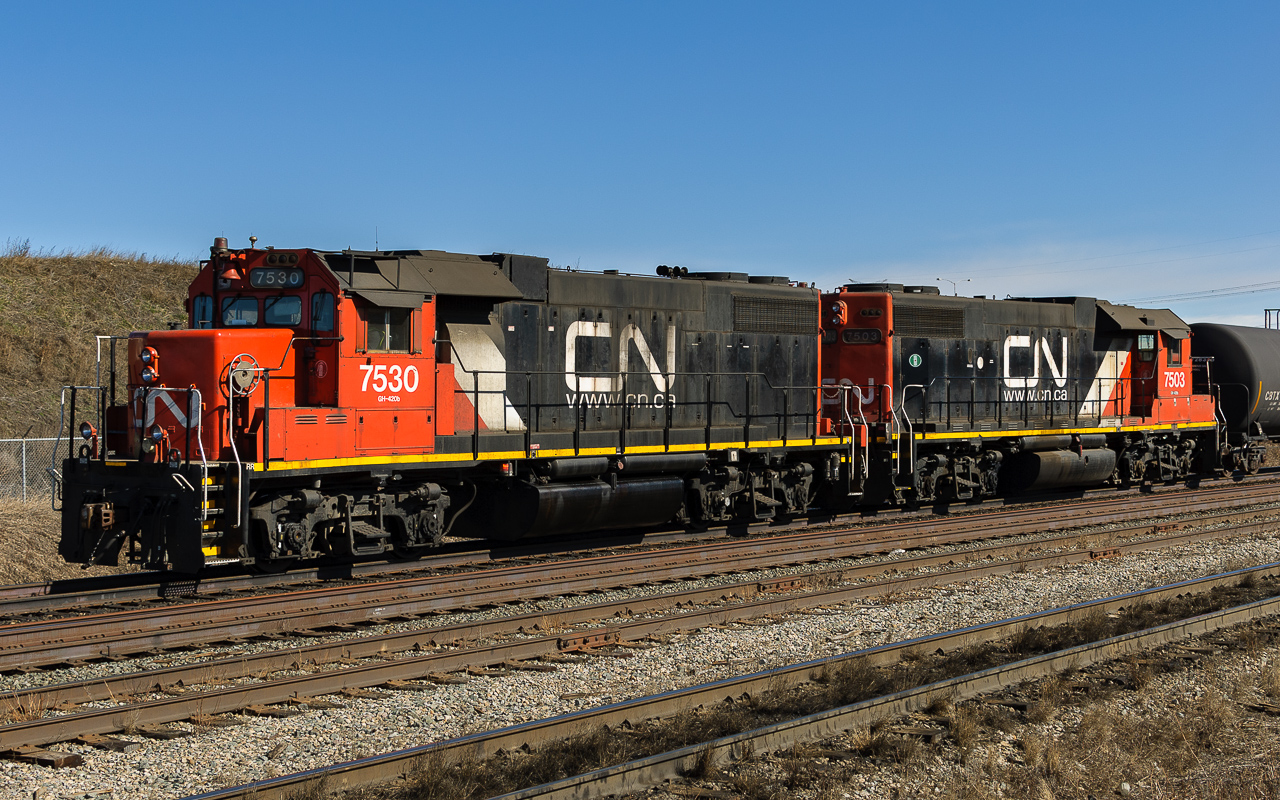
Welcome Visitor. First time here? Like what you see? Bookmark us for when you are bored, and check out 'top shots' and 'fantastic (editors choice)' in the menu above, you won't be dissapointed. Join our community!
click here to sign up for an account today. Sick of this message? Get rid of it by
logging-in here.



Good shot of a pair of interesting units. I have always wondered why these were built long hood forward. I believe the H in the classification is proof of It’s hump service past.
First, thanks for the comment, 2nd, good eye spotting the H. I was going to mention that in my caption about how after all this time these units are still wearing the H in their designation. My wild guess as to why long hood forward. It’s a wild one. The 1200′s that worked the hump previously, worked just like this. Endcabs at each end, whether in sets of 2 or 3. And of course, their long noses are front for a 1200. So, if you for a minute imagine these 7500′s with an endcab, it makes sense. Did CN want to keep things the same through these 2 generations of hump units? Coming from the north side of Calder yard and negotiating the crossovers to get to the hump pullback on the south side. It was good for the engineer to have a good view pulling back and sitting on the one side of the engine. Back in my time, the throat at the east end of Calder had a number of electric push button switches. Because the engineer was sitting on the same side as the switches for those crossovers, it was one of the few times an engineer would get out of the cab back then and get the switch. I can count on one hand the number of times that would have happened anywhere else. ESB’s were just coming onto the scene, they were more opened minded and being junior to the many hogheads, were usually forced on an afternoon or midnight hump job. My wild guess.
The 1200′s that worked the hump previously, worked just like this. Endcabs at each end, whether in sets of 2 or 3. And of course, their long noses are front for a 1200. So, if you for a minute imagine these 7500′s with an endcab, it makes sense. Did CN want to keep things the same through these 2 generations of hump units? Coming from the north side of Calder yard and negotiating the crossovers to get to the hump pullback on the south side. It was good for the engineer to have a good view pulling back and sitting on the one side of the engine. Back in my time, the throat at the east end of Calder had a number of electric push button switches. Because the engineer was sitting on the same side as the switches for those crossovers, it was one of the few times an engineer would get out of the cab back then and get the switch. I can count on one hand the number of times that would have happened anywhere else. ESB’s were just coming onto the scene, they were more opened minded and being junior to the many hogheads, were usually forced on an afternoon or midnight hump job. My wild guess. 